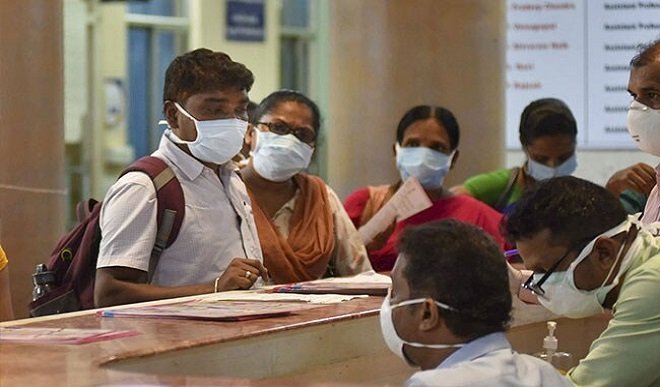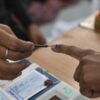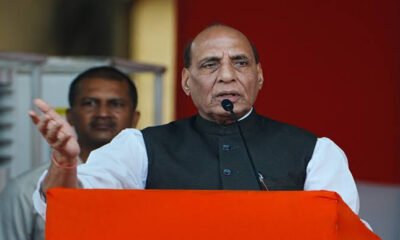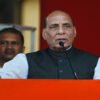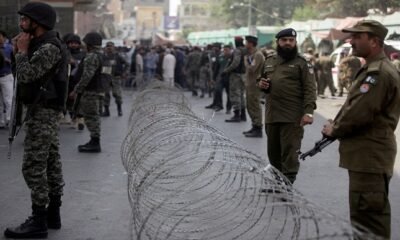National
Fooled by Randomness
Pranjal Singh
How well prepared are we for a random medical emergency?
How responsive is our Disaster Management System?
How effective is our Integrated Disease Surveillance Program?
How effectual is decentralization of efforts in tackling medical emergency like COVID19?
How Anti-fragile is out system?
As per latest ICMR update, there are 415 positive cases of COVID19 with more than 15000 tests have been conducted. ICMR has allowed private laboratories to test for COVID19 and several other measures are being taken to reduce the emission of the virus. Experts believe that India till now has tackled COVID19 pretty well, however, efforts need to step up in terms of testing to gauge the extent of community transmission. Economic steps need to be taken to reduce the impact of the lockdown on the poor, several states have already taken action in this regard, however, response of the Central Government is still awaited. As per the trends of spread in Italy & China, week 3 & 4 are crucial for India if it follows a similar trend.
In 2001, Nassim Nicholas Taleb in his book ‘Fooled by Randomness’ , talked about a random event which has a high catastrophic impact and the inability of the system to gauge that random event. The present statistical system is unable to capture such random events, which in turn results in government not being prepared to tackle it. He attributed the reason for this to the over dependence of the system on ‘Normal Distribution Curve’ which is not efficient to capture random event. He believed that though the event is random, but it’s impact will be so high that government needs to work on it. He was derided by the renowned statisticians & econometrist for his ‘language’ and the way he expressed his thoughts by casting aspersion on the statistical society. His words couldn’t be more truer and the statistical society needs to take the blame for turning a ‘Nelsonian eye’ towards this issue. The book is far more relevant today than it was in 2001-02. Putting the book in today’s context, a ‘random’ medical emergency has gripped the world and brought complete economic, social & governmental lockdown which even the disaster of 1991-92 or 2007-08 couldn’t bring. Is our system prepared to tackle this? IDSP – Integrated Disease Surveillance Program, on which our current efforts to gauge & reduce the impact hinges on, as happens with all infectious & non-infectious disease spread, have been highly underfunded over the years. The program was started in 2004-05 with the help of World Bank, received only around 65-70 Cr. This includes surveillance activities in 5,568 health blocks, 1003 District Hospitals, 1255 Sub-Division Hospitals & 2500 NABL accredited laboratories in India. With such meagre resources, how can a well-oiled surveillance system be created?
Is decentralization effective in times like pandemic? Correct & timely information dispersion is the hallmark to tackle any disease spread in India which might be infectious or non-infectious. Spread of rumors has been described as ‘infection of the mind’ and their dispersion is analogous to the spread of infectious disease. With hardly any research & review mechanism at the District level and District surveillance system being under-resourced, the District Administration in India are not capacitated to do any innovation at the District level. A slight misinformation or misinterpretation will have consequences in times like these which would be very difficult to contain. There has to be a constant and single source of information, typical in a command & control style of governance, so that rumors are curbed. Any innovativeness at the District level & below level can be counter-productive.
Resilience is the ability of the system to recover from the catastrophe. Is our system resilient enough? Going by the precedent of 1991-92 & 2007-08, our system has shown resilience and was able to avert any potential impact. However, there’s a difference between resilience & anti-fragile. Anti-fragility is the ability of the system to ameliorate itself after the catastrophe. Is our system anti-fragile? In 1991, we used crisis as an opportunity to ameliorate the different processes & procedures for the economic growth. However, in 2007-08, we were able to avert the crisis, but couldn’t strengthen our system thereafter, which resulted in recent banking crisis. Let us hope that after averting the crisis this time, we are able to use this opportunity to strengthen disease surveillance system, laboratory system & procurement system in the health arena.
It’s the perfect time to read ‘The Black Swan’ by Nassim Nicholas Taleb to understand the ineffectuality of Normal Curve for times like these.
(The writer is a Public Policy enthusiast and is currently based out of Ranchi)


